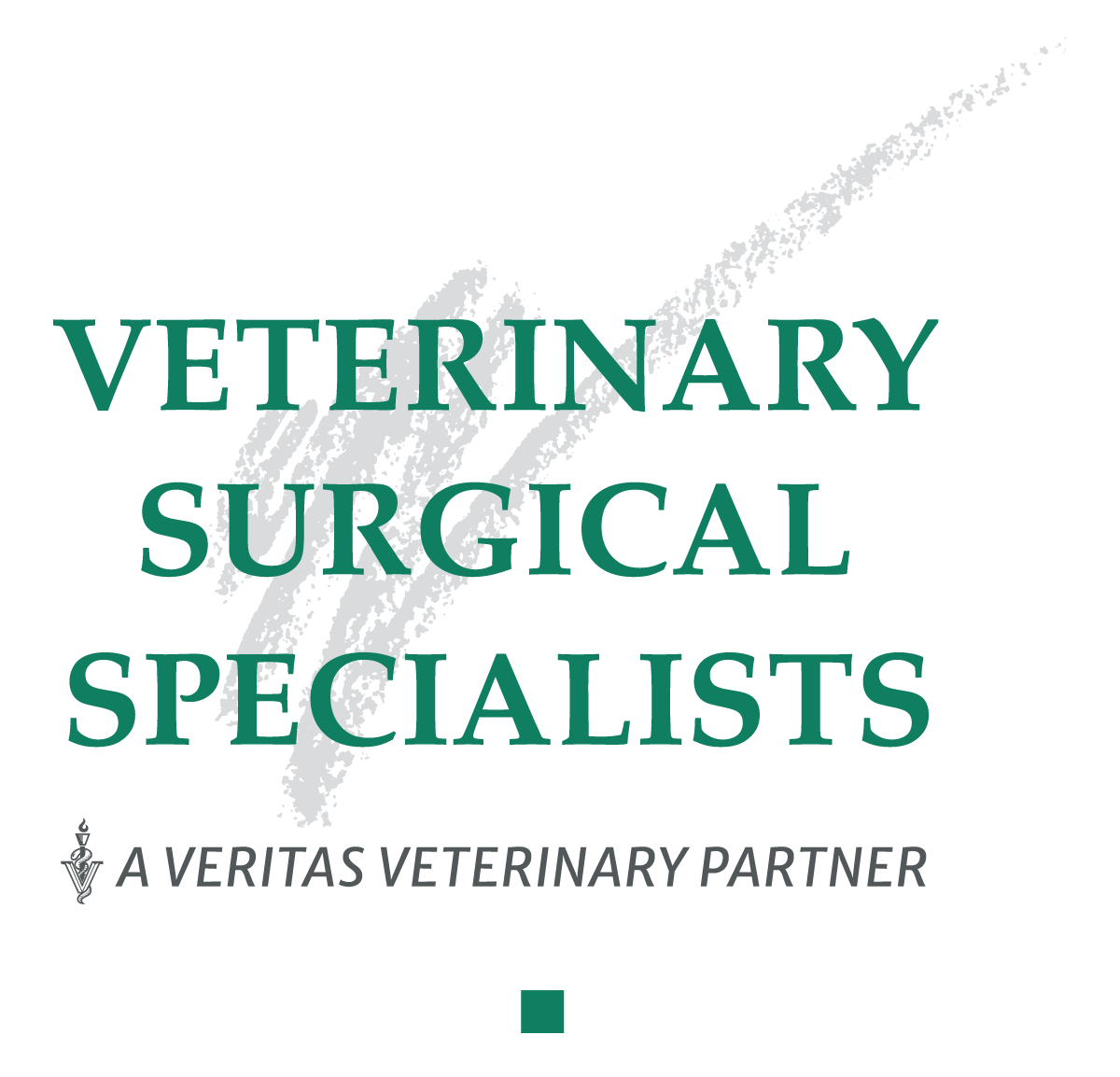When Does My Dog Need TPLO Surgery?
What is TPLO?
Tibial Plateau Leveling Osteotomy (TPLO) is a surgical treatment used to stabilize the stifle joint when the Cranial Cruciate Ligament (CrCL) has ruptured. The CrCL is similar to the ACL in a human knee, but unlike in humans, the CrCL rarely ruptures from sudden trauma in an otherwise healthy ligament. Rather, a rupture is usually the result of a slow degeneration that has taken place over months or years due to the presence of Cranial Cruciate Ligament Disease (CrCLD).
The CrCL cannot heal on its own once it starts to tear, nor can it be replaced with a graft, so the surgical techniques used on dogs focus on changing the biomechanics of the knee joint itself in order to attain the goal of pain-free, stable movement. Surgery is the only option to permanently “fix” the instability and relieve pain created by the rupture.
The TPLO procedure consists of cutting the top of the tibia (bone below the knee), rotating it, and stabilizing it in a new position with a bone plate and screws. These changes affect the dynamic movement between the bones of the knee and counter the loss of the CrCL. The TPLO procedure has been proven to have consistent positive outcomes even in large, athletic dogs, and dogs that undergo TPLO are highly likely to be capable of a full and active life.
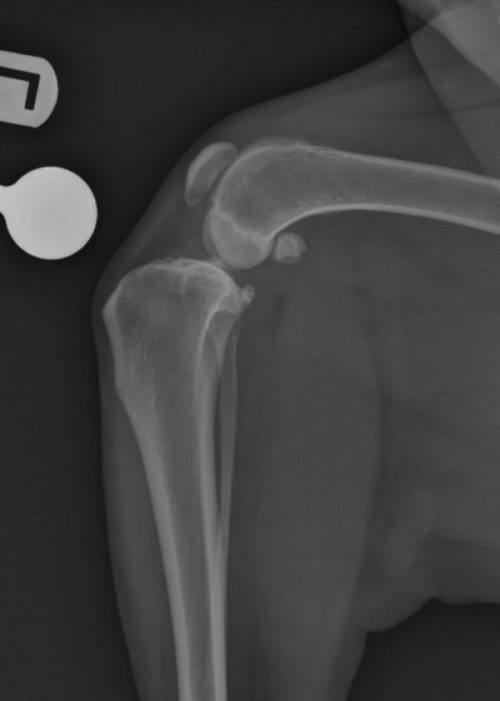
Why would my pet need TPLO surgery?
A torn CrCL is painful! Dogs with this injury cannot walk normally, and the instability caused by the tear damages the surrounding bone and cartilage. Surgery can stabilize the joint, relieve pain, help avoid irreversible joint damage and the onset of osteoarthritis, and allow your dog to live a normal, active, pain-free life.
Symptoms of a torn CrCL include:
- Decrease in activity level and unwillingness to play
- Limping/lameness
- Difficultly rising or jumping
- Pain and stiffness in the hindquarters
- Decreased range of motion
- Muscle atrophy in the affected leg
- Popping noise or swelling on the inside of the shin bone
Risk factors for CrCLD include age, obesity, poor conformation (structure), breed, and lack of fitness. While the disease can affect any size, breed, or age of dog, Newfoundlands and Labrador Retrievers have been found to have a genetic component to developing CrCLD. Other breeds that have a higher risk of developing CrCLD include Chesapeake Bay Retrievers, Akitas, Mastiffs, Rottweilers, Saint Bernards, and Staffordshire Terriers. Cats are rarely affected.
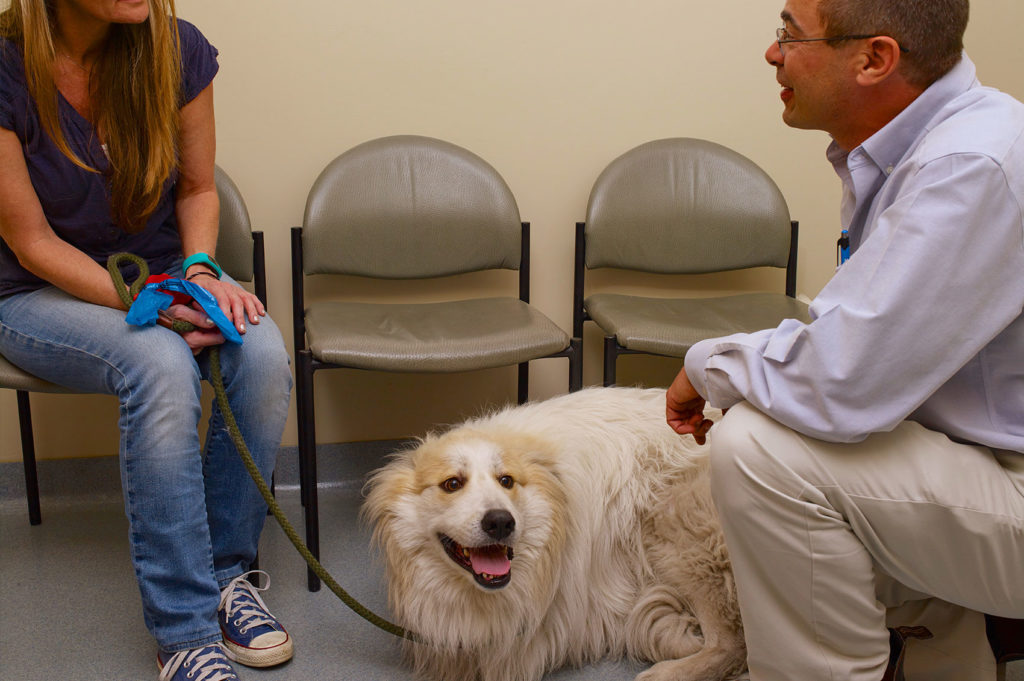
What is included with my investment for TPLO at VSS?
Our all-inclusive fee provides:
Pre-op
Before surgery, you and your dog will have a consultation with a VSS board-certified veterinary surgeon, which includes a physical exam, discussion of the causes of a cruciate ligament tear, an explanation of options (TPLO vs. lateral suture vs.TightRope), a viewing of an animation of the TPLO procedure, and of course, answering any questions from you.
At the initial consultation, our staff will provide an estimate for pre-operation, the procedure, and post-operation, and also includes all exams, medications (not refills), post-op X-rays, and day-of-surgery bloodwork.
During Surgery
At VSS, your pet’s surgery is performed in a sterile, dedicated surgical environment by the same surgeon you meet with during your initial consult. Medications and anesthesia required by your pet during surgery are included, as well as anesthesia monitoring both during surgery and through recovery by a registered veterinary technician (RVT) who has extensive experience with anesthesia. Your dog’s leg will be bandaged and he or she will recover in a bed with supplemental heat.
Post-op
Overnight hospitalization is required for most surgeries, although for TPLO, possibly two to three nights if bilateral, depending on whether the patient is able to walk with two bandages. You can rest easy knowing that your pet will be monitored 24/7 by a veterinarian and will receive necessary antibiotics and pain medication. Additionally, patients are offered a meal when they are alert and will be walked in the afternoon for elimination. While we don’t usually allow visitors due to patient anxiety, our veterinary technicians are happy to send photos as requested by pet parents.
The staff at VSS are available for you to call for updates on your pet any time during their stay with us, 24 hours a day, 7 days a week.
Pain Management
The surgery fee includes all the medications (antibiotic, anti-inflammatory, and pain) your pet needs to come home and be comfortable during their recovery. For TPLO patients, we often use long-acting regional anesthesia, which has greatly decreased the need for narcotics.
Recovery
After your dog returns home, he or she will need to be confined to a small rest area for two weeks with limited walks only while on a leash. For two to six weeks, we recommend all patients go on short walks only while on a leash and continue confinement indoors when unattended. These types of measures at home will ensure a successful and speedy recovery.
Follow-up
Post-surgical appointments to check on the status of your pet are also included in the surgery package. Post-op follow-up appointments include bandage removal at three to five days, suture removal at two weeks, then post-op X-rays at six weeks. All of the above routine recheck appointments are included with the surgery.
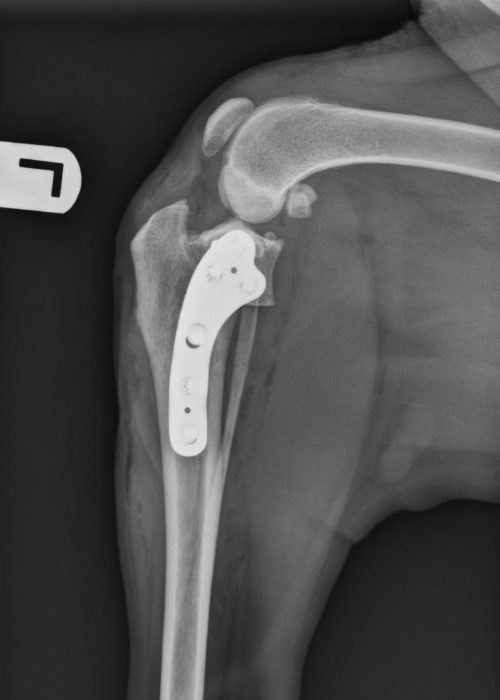
Why choose VSS for your pet’s procedure?
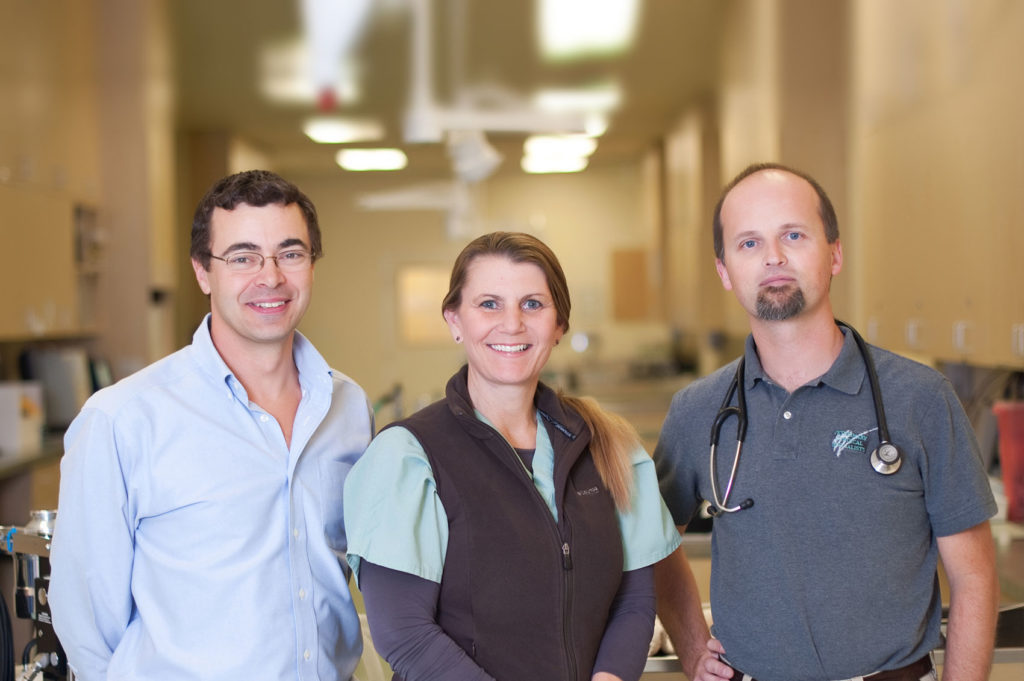
At VSS, all we do each day is perform advanced, technical surgeries in our state-of-the-art facility. Our board-certified veterinary surgeons trained at some of the most prestigious veterinary teaching hospitals in the country, and are leaders in the field of orthopedic surgery with over 70 years of combined surgical experience.
Additionally, VSS is Southern California’s premier surgical hospital, and one of the first specialty hospitals to receive an Accredited Referral Practice designation, which means over 900 quality standards of our practice are consistently evaluated by the American Animal Hospital Association (AAHA). Unlike human hospitals, accreditation for a veterinary hospital is voluntary. Rest assured, we hold ourselves to that higher standard every day.
But all that means nothing without the compassion and dedication to service from our highly trained and experienced team members. In short, you can expect the best from VSS from the very start.
For more information or to be contacted by a VSS team member for a consultation, fill out the below form.
